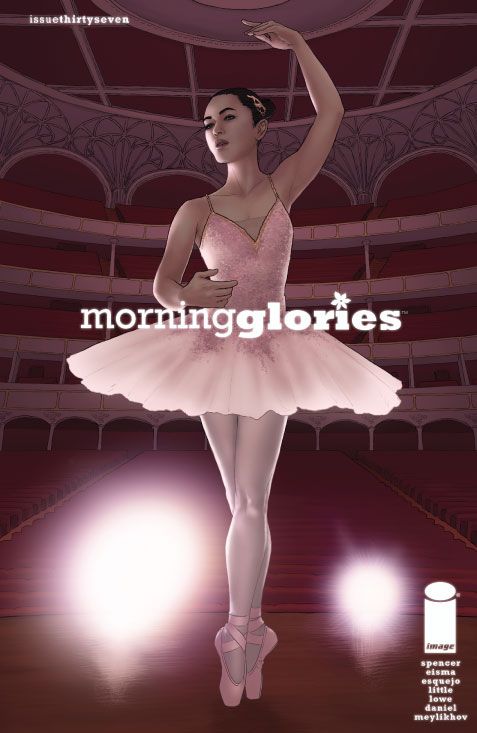Nick Spencer and Joe Eisma's "Morning Glories" #37 puts on the spotlight on Akiko while she is in a coma, giving readers glimpses of her childhood as well as weaving in new players and old friends and foes.
As is typical for "Morning Glories," the timeline is complex. The reader is moves with Akiko around her unconscious mind, and the setting and event shift suddenly with the winds of dream logic. Although the reader gets to follow Akiko around more closely than ever before, "Morning Glories" #37 doesn't develop Akiko that much as a character. She has a rescue/savior complex and is sweet and self-sacrificing, but those characteristics were present in earlier storylines.
Spencer is spotlighting each of the Truants, with Akiko being the last after Irina, Vanessa, Guillaume, Fortunato and Ian. This provides an opportunity to compare the current Season 2 arc with a similar approach in Season 1, where in the second story arc, "All Will Be Free," Spencer spotlighted the original six Glories. In comparison, the original Glories had stories that were relatively more self-contained, linear, easier to grasp and character-driven, instead of concept-dominated. Akiko's story feels simultaneously fragmented and self-consciously artificial. Once Spencer really started using the time travel element, the storylines have become exponentially more complex.
All this disorientation feels deliberate on Spencer's part. He is asking a great deal of his readers, perhaps too much. The plot feels like it's getting out of control and unwieldy, regardless of whether the reader is willing to continue delaying gratification on major plot points being resolved. Characterization is being sacrificed on the altar of the themes and plot mechanics. While demanding a strong level of involvement and close attention from the reader can work, that isn't the problem here. Any investment in "Morning Glories" #37 is riding the coattails of the attractions of previous storylines. It would be impossible for a new reader to figure out anything, and for long-time readers, now there are diminishing returns on the investment of keeping up to speed. New data only adds to the maddening complexity of the existing facts.
Even if readers have faith -- itself ironic in light of the series' primary theme -- Spencer continues to test their commitment. The rewards issue to issue are becoming slimmer for readers who care more about the characters, dialogue and humor than the Big Puzzle or peeling the onion layers of religious references and symbols.
The story as a whole may yet be worth it. While more concrete storytelling would be welcome at this point, Spencer's use of the ballet/performance theme is well put-together, even though it feels unnecessarily abstruse.
More importantly, Eisma's artwork is still superlative, especially on body language and facial expressions. "Morning Glories" #37 can be difficult to parse, but not because of Eisma's transitions, which work to keep setting and time clear, if not meaning. It was also a pleasure to see his character design for kid Akiko in the opening scene, and how the later ballet scenes had skillful foreshortening and accurate stances.
In moving away from some of its original strengths in characterization and dialogue, "Morning Glories" is leaning more heavily on its technique and ideas. It's like watching a top-notch science fiction story morph into being an art film, and not all of that change in emphasis is to the good. That said, Spencer and Eisma's storytelling skills are still present, and the further developments are still worth following, although the individual reader's mileage may vary depending on patience and curiosity.

